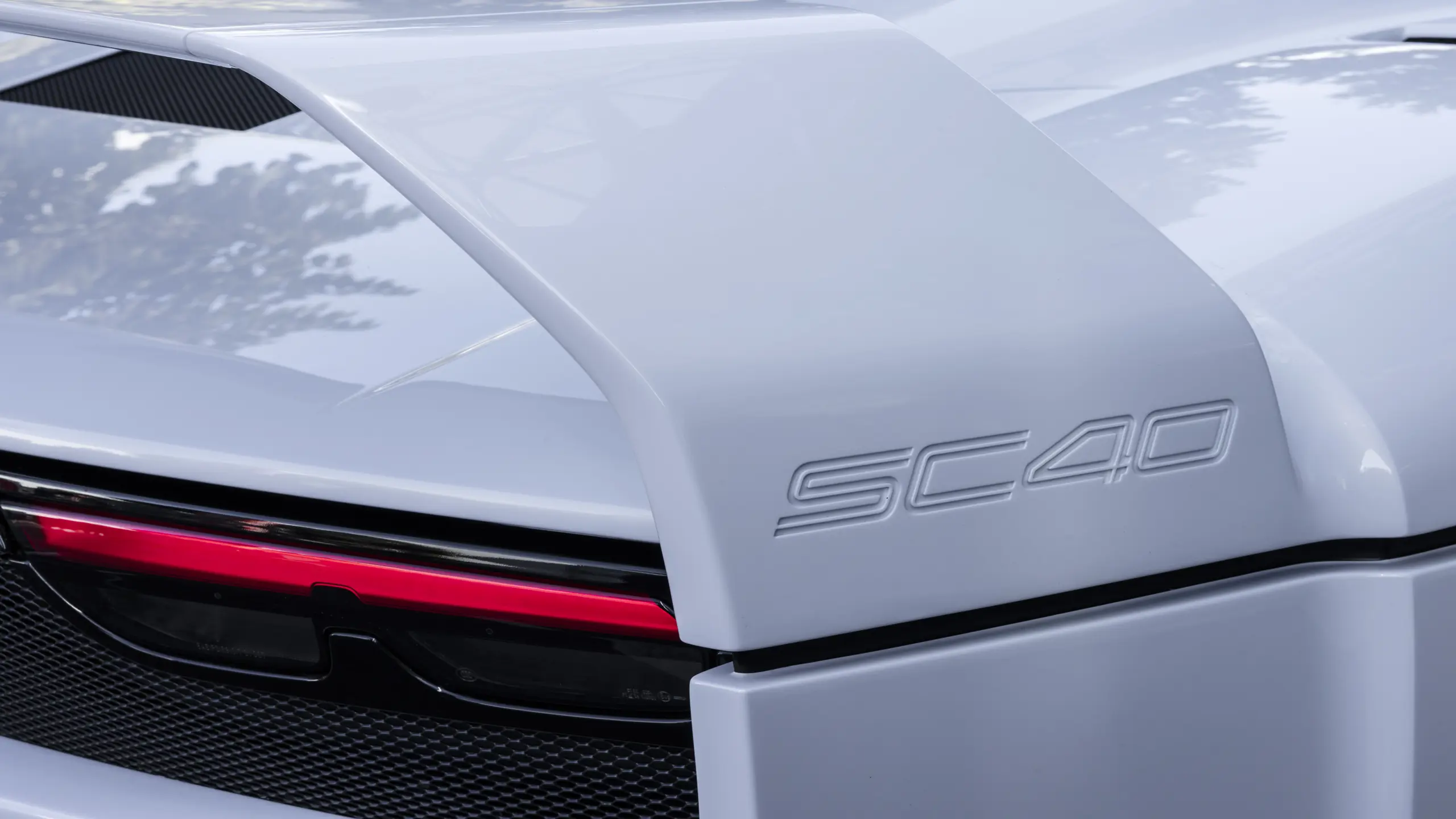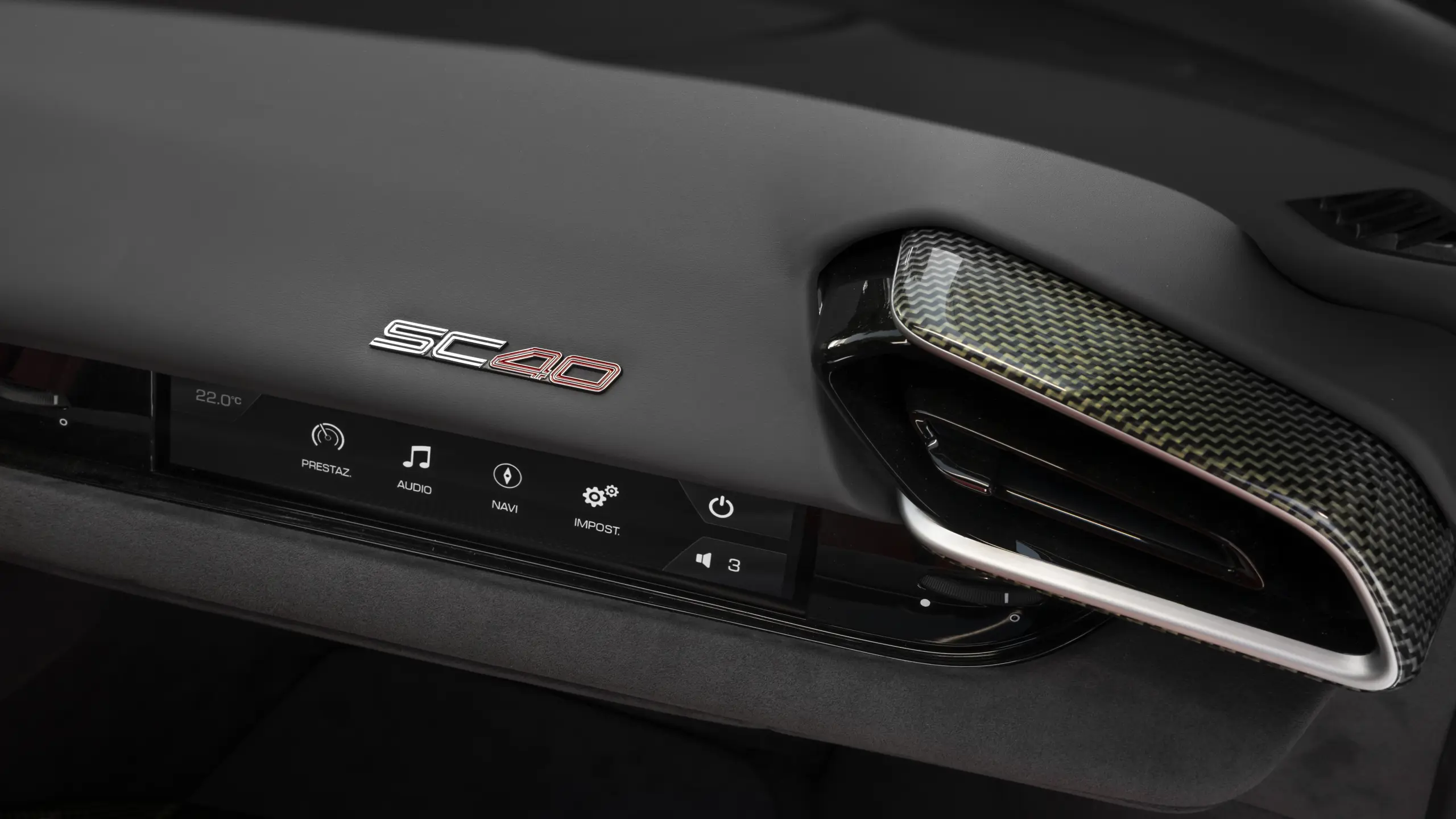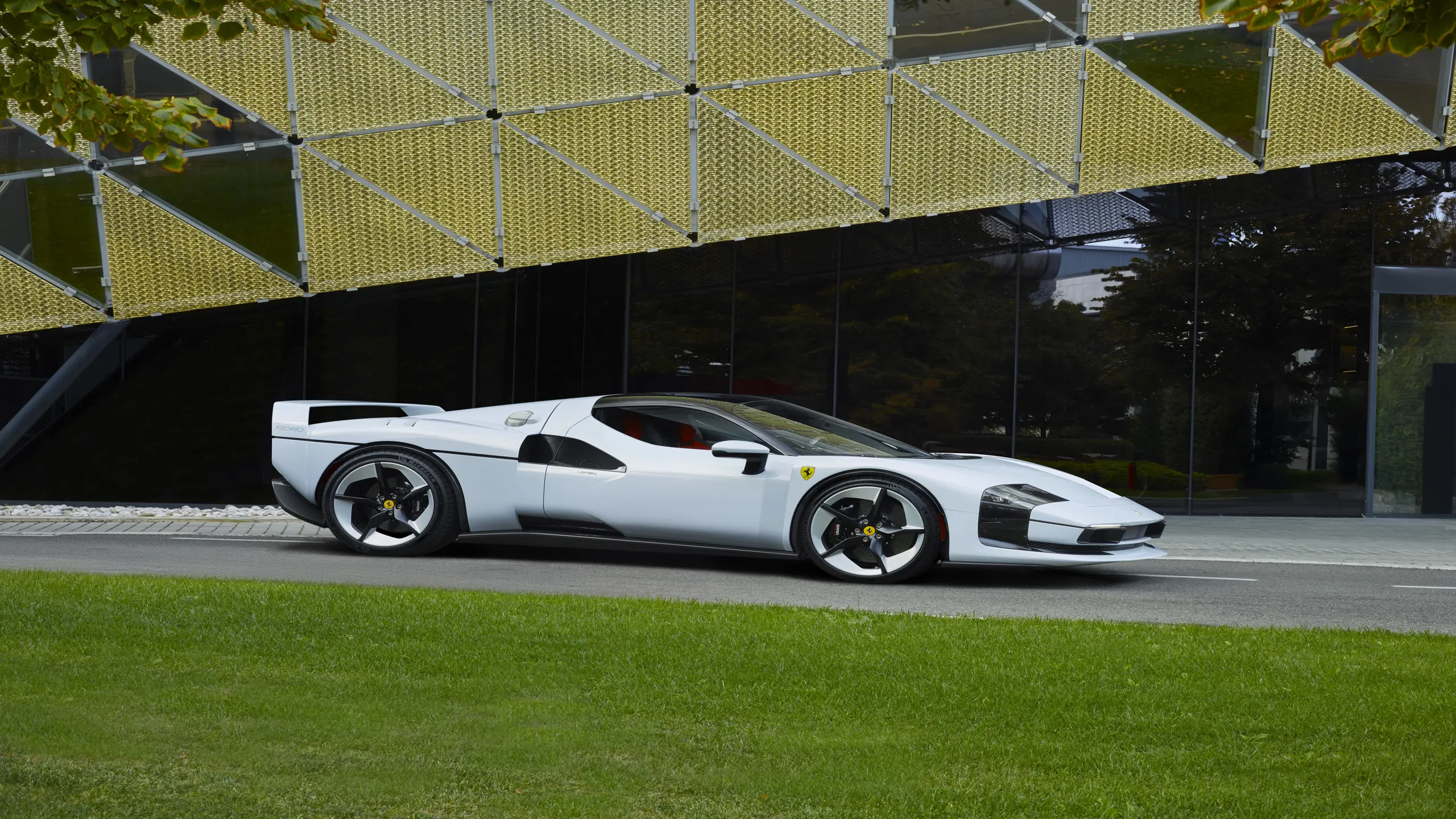A new chapter in the art of the One-Off
In Maranello, the birthplace of legends, Ferrari unveils a new masterpiece that transcends even its own tradition of exclusivity, the Ferrari SC40. Created through the marque’s revered Special Projects programme, the SC40 represents the purest expression of Ferrari’s bespoke philosophy: a car designed not merely for performance, but for an individual’s imagination. Conceived by the Ferrari Styling Centre under the direction of Flavio Manzoni, this unique mid-rear-engined berlinetta takes the architecture, chassis, and powertrain of the 296 GTB, and transforms them into something singular, sculptural, and uncompromising. The SC40’s name pays homage to the legendary F40, the last Ferrari personally approved by Enzo Ferrari, yet it is no mere tribute. While it echoes the sharp, angular gestures of its 1980s predecessor, the SC40 reinterprets those cues with a contemporary sensitivity, balancing industrial precision with modern aerodynamic fluidity. Its proportions are purposeful: a long, low nose, a taut rear overhang, and a fixed rear wing that rises from the body like a structural sculpture, fusing beauty and performance into one inseparable form. The SC40 White finish, developed specifically for this commission, lends a cool, luminous tone that accentuates each plane of the bodywork, from the knife-edged intakes to the muscular rear haunches. Subtle details, the engraved SC40 script on the wing, the Ferrari lettering cut in negative on the engine cover, and the brushed-aluminium fuel caps, reinforce the car’s minimalist yet deeply personal aesthetic.
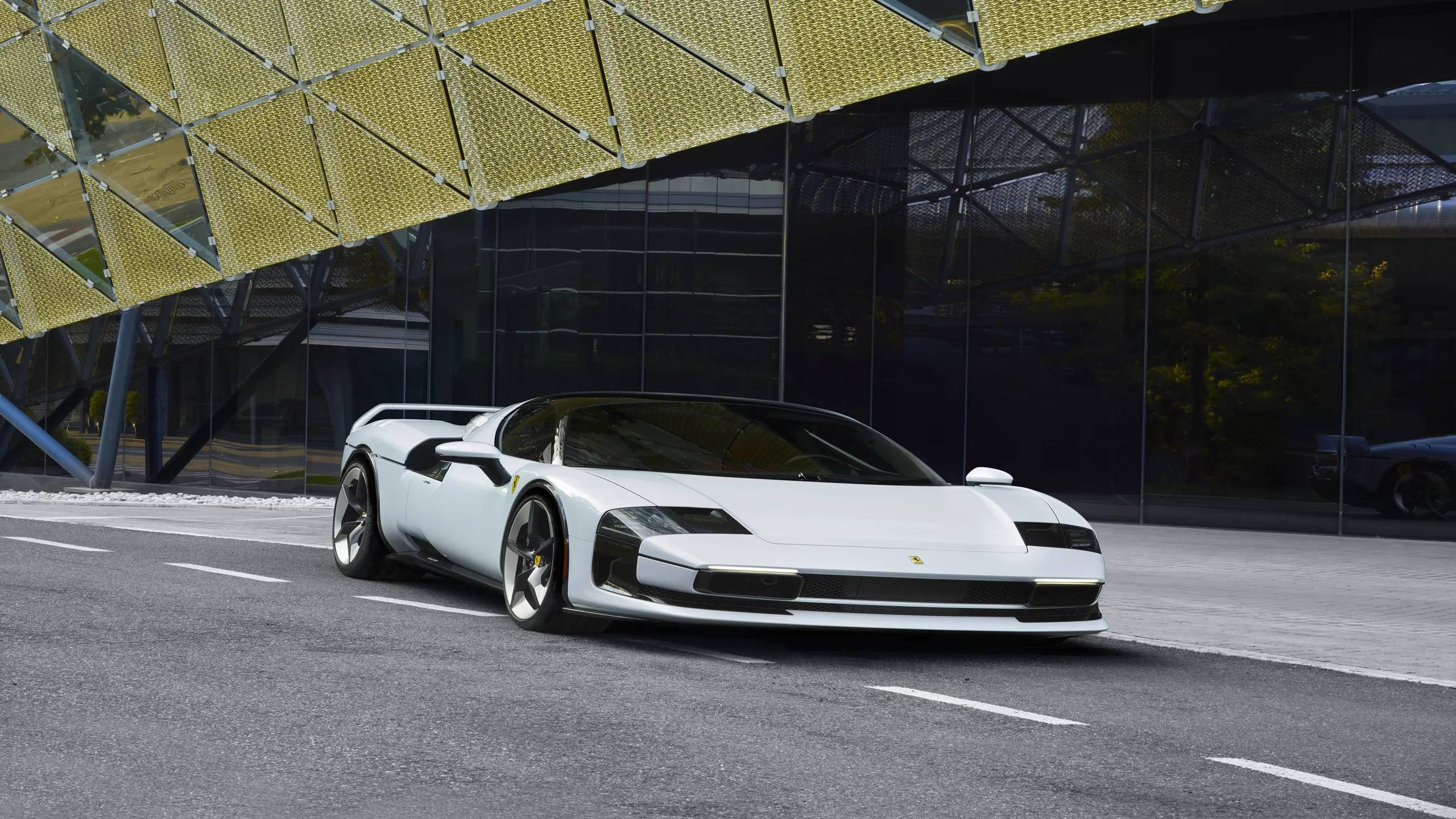

Design as sculpture: A dialogue between past and future
At first glance, the SC40 communicates a sense of architectural discipline. Every surface, every intersection, appears defined by a deliberate geometry, an approach rooted in industrial design philosophy. The car’s vertical lines, visible along the wings, door cuts, and engine cover, form a rhythmic pattern that almost suggests a structural grid, organizing its visual energy like a musical score. At the front, the design departs from the fluidity of the 296 GTB in favor of a bolder, more mechanical character. The headlights sit at the outermost edges, set within black housings that plunge toward a full-width lower intake. Two rectangular frames carve out the brake ducts, their assertive geometry emphasizing the car’s planted stance. This deliberate symmetry gives the SC40 a commanding presence, a visual tension that feels both nostalgic and futuristic. Moving along the flanks, the SC40 introduces reinterpretations of the NACA ducts, now presented as triangular carbon-fibre forms feeding the intercoolers. The body’s side rhythm is muscular but ordered; its tension lies not in excess, but in precision. At the rear, the composition turns dramatic: the fixed wing, finished in SC40 White, merges vertically into the engine cover, divided by a black separation line that highlights the contrast of form and function. Beneath it, an open mesh reveals the mechanical heart of the car, while smoked Lexan® louvres showcase the twin-turbo V6 engine, a deliberate display of power, technology, and craftsmanship. Completing the rear statement are titanium and carbon-fibre exhaust tips, produced through additive manufacturing, and tail-lamps that subtly nod to the 296 GTB. The exclusive wheels, finished in brushed metal and gloss black, underscore the SC40’s technical precision, reflecting both performance engineering and aesthetic restraint.
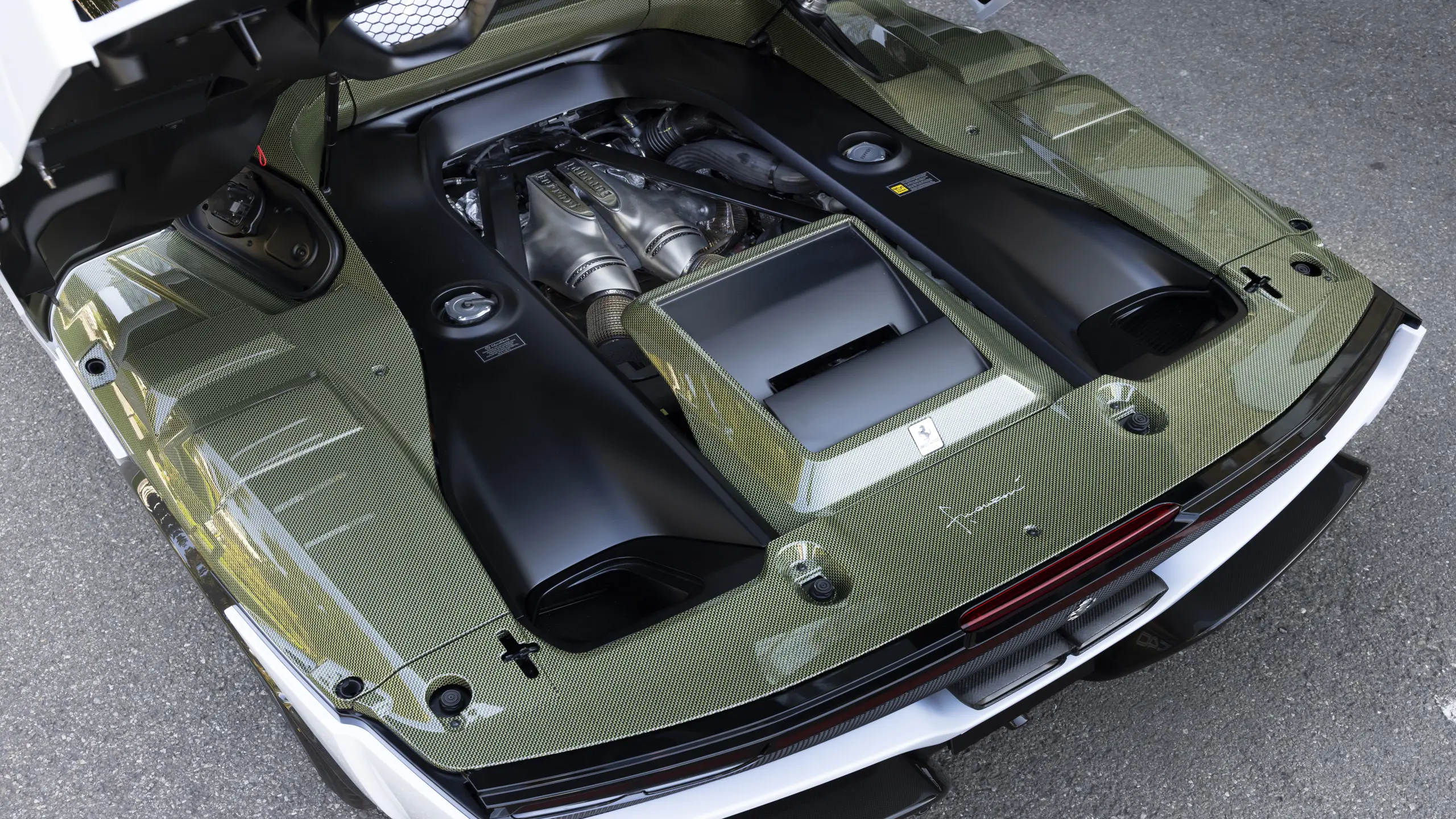

Inside the machine: A return to raw authenticity
If the exterior embodies sculptural purity, the interior of the SC40 reveals a more tactile kind of artistry. Ferrari’s designers revisited the Kevlar legacy of the F40, reimagining it through modern craftsmanship and composite innovation. The result is a cabin defined by carbon-Kevlar panels, visible in the footwells, behind the seats, and across the floor, a subtle dialogue between nostalgia and cutting-edge materiality. The cabin’s tonal palette is understated yet technical: Charcoal Alcantara® meets red Jacquard fabric, while the Prancing Horse and woven SC40 logo on the seatbacks lend a bespoke signature. The steering wheel, dashboard inserts, and even portions of the engine bay are rendered in Kevlar, echoing the car’s dual devotion to lightness and authenticity. Each texture, from the matte carbon to the soft Alcantara, reflects a purpose: to immerse the driver in the tactile essence of performance. As with all Ferrari One-Off creations, the interior of the SC40 was conceived in direct collaboration with its client, ensuring that every stitch and surface tells a story of personal vision. It is both a cockpit and a gallery, a space where emotion and engineering intersect with absolute clarity.
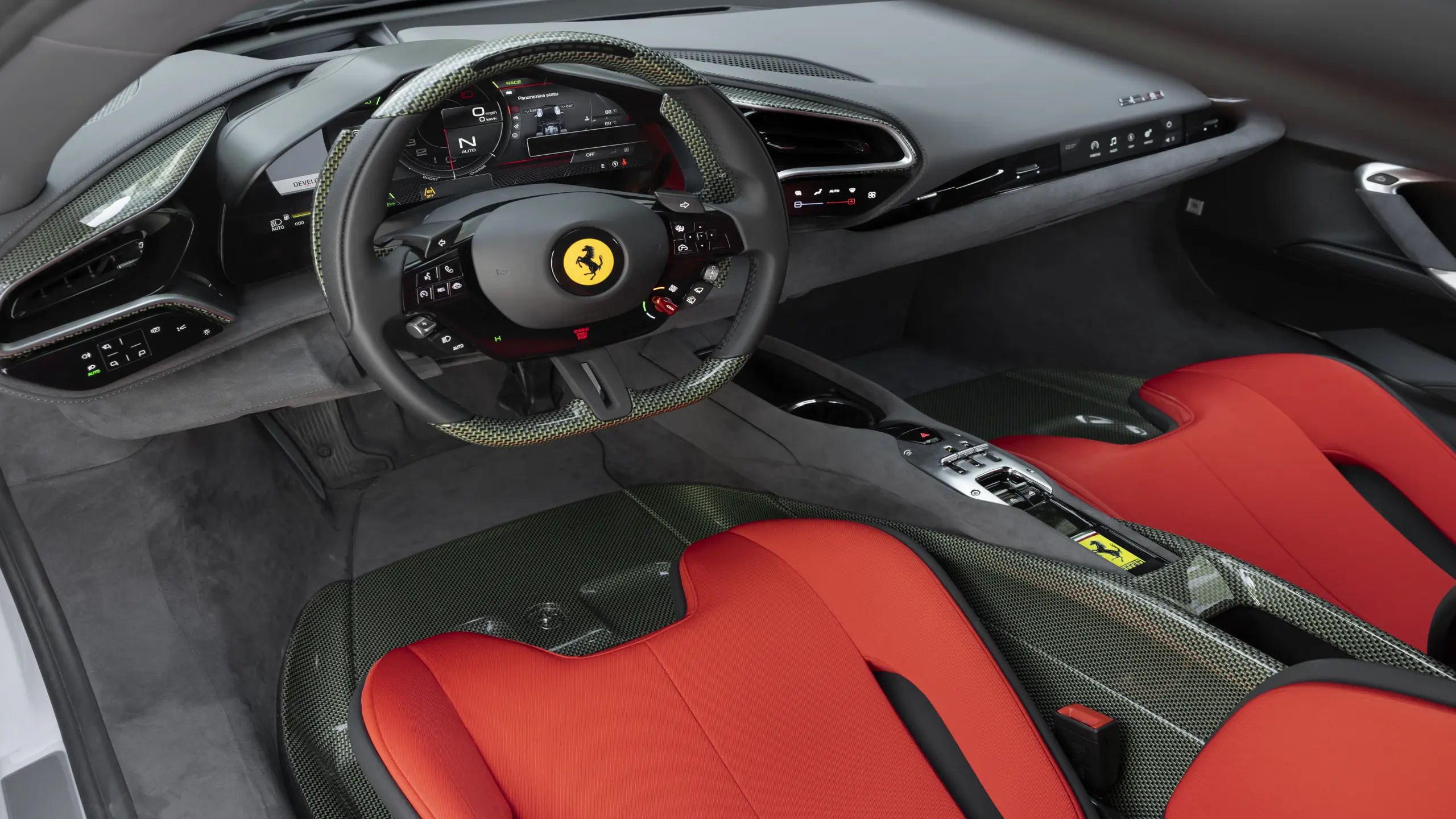
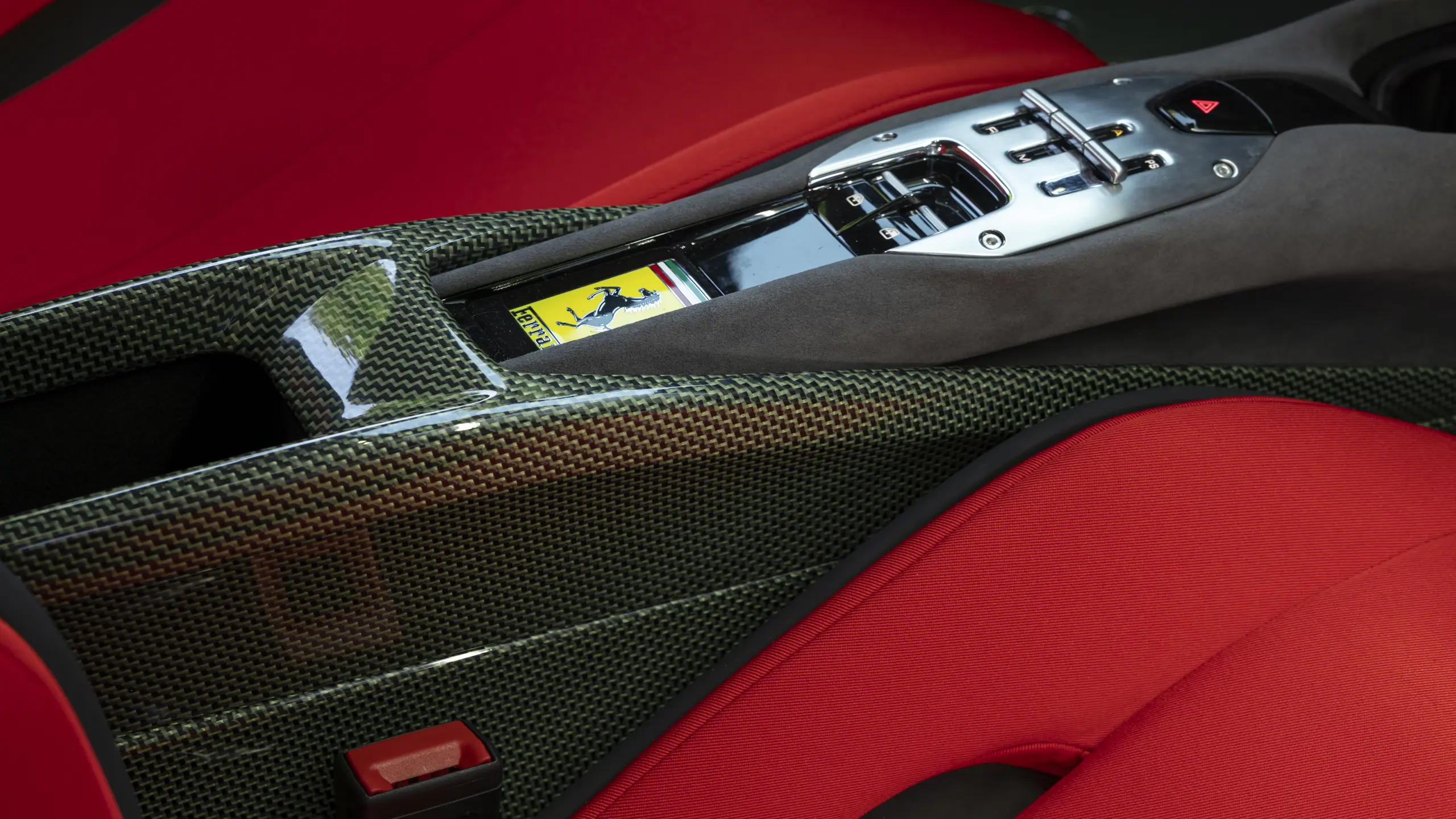
The essence of the Ferrari special projects philosophy
Beyond its striking form, the SC40 represents something far deeper, a continuation of Ferrari’s One-Off lineage, a programme that transforms individual dreams into tangible motion. Each Special Project begins with an idea proposed by a client and evolves through two years of collaboration, from early sketches to full-scale styling buck, before culminating in a car engineered to Ferrari’s uncompromising standards. The SC40 exemplifies this process in its purest form. It is a one-of-a-kind berlinetta, designed for a single collector yet destined to inspire the collective imagination. In Maranello’s Ferrari Museum, where the styling buck will be displayed, it will stand not just as an artefact of design, but as a symbol of the dialogue between artistry, technology, and individuality that defines Ferrari at its most expressive. For the marque that built the F40, Enzo Ferrari’s final gift to the world, the SC40 feels like a fitting modern echo, a car that reaffirms Ferrari’s core truth: that even in an era of electrification and algorithms, emotion remains the most powerful form of performance.
